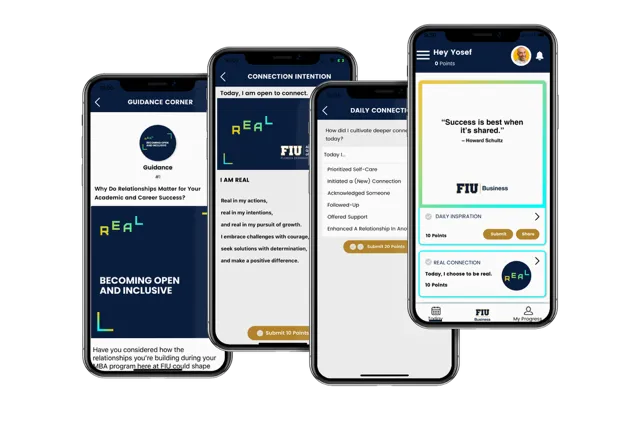THE FUNDAMENTALS OF STRATEGIC PLANNING EXPLAINED—FRAMEWORKS, PROCESS & BENEFITS
BOOSTING RETENTION THROUGH PEER CONNECTION & BELONGING
Experience the Gamechanger Challenge App in Action!
TRANSFORMING ONLINE LEARNING THROUGH CONNECTION & BELONGING
Experience the Gamechanger Challenge App in action!
Fundamentals of Strategic Planning
Fundamentals of Strategic Planning is a cornerstone of effective strategy. This page explains what it is, why it matters, and how to apply it in mid-sized businesses and higher-education institutions.
What It Is & Why It Matters
In practical terms, fundamentals of strategic planning aligns vision with execution. It helps leaders answer three questions: Where are we now? Where are we going? How will we get there?
Benefits
Direction & alignment across teams and stakeholders.
Better decision-making using shared priorities and criteria.
Resilience and agility when conditions change.
Higher engagement by connecting work to purpose.
Measurable impact via clear metrics and governance.

Step-by-Step Approach
Assess current state (SWOT/PESTLE, performance review, stakeholder input).
Clarify mission, vision, and values to anchor priorities.
Select 3–5 strategic priorities that move the needle.
Convert priorities into goals and SMART/OKR-style key results.
Design initiatives, owners, timelines, and resourcing needs.
Define metrics and dashboards (e.g., Balanced Scorecard perspectives).
Implement through governance cadences (monthly/quarterly reviews).
Refresh annually; adapt initiatives while protecting long-term strategy.
Useful Frameworks
Balanced Scorecard: links strategy to KPIs across financial, customer, process, and learning perspectives.
OKRs: focuses teams on ambitious objectives with measurable key results.
Hoshin Kanri: cascades strategy into daily management with catchball alignment.
McKinsey 7S: checks alignment among strategy, structure, systems, style, staff, skills, and shared values.
PESTLE/Porter/VRIO: strengthens external and internal analysis during formulation.

Practical Applications
Mid-sized business: align revenue growth, customer experience, and operations with a single operating rhythm.
Higher ed: tie student success (retention, belonging), faculty support, and financial sustainability to clear initiatives.
Cross-functional: build a shared roadmap, resourcing plan, and scorecard; revisit quarterly.
Common Pitfalls to Avoid
Plans that are too broad (no choices) or too detailed (no flexibility).
No ownership or governance—dead on arrival.
Metrics without baselines, targets, or accountability.
Excluding stakeholders; low buy-in and weak execution.
Treating the plan as a one-time event instead of a living system.
FAQ
1. What is the main purpose of strategic planning?
Answer: To align vision with execution
2. Which three questions does strategic planning help leaders answer?
Answer: Where are we now, where are we going, how will we get there
3. What is one key benefit of strategic planning?
Answer:Direction and alignment across teams
4. What analytical tools are commonly used in assessing the current state?
Answer: SWOT and PESTLE
5. How many strategic priorities are typically recommended?
Answer: 3–5
6. Which framework links strategy to KPIs across different perspectives?
Answer: Balanced Scorecard
7. What do OKRs focus on?
Answer: Ambitious objectives and measurable key results
8. What is the main focus of Hoshin Kanri?
Answer: Daily management alignment
9. Which framework checks internal alignment among strategy, structure, and systems?
Answer: McKinsey 7S
10. What is a common pitfall in strategic planning?
Answer: Plans that are too broad or too detailed
11. How often should strategic plans be refreshed?
Answer: Annually
12. What is the final step after developing a strategic plan?
Answer: Implementing governance and performance reviews
Overview
Fundamentals of Strategic Planning provide the essential building blocks for turning vision into actionable results. This process helps organizations clarify where they are, where they want to go, and how to get there effectively. By aligning mission, vision, and values with measurable goals, businesses and educational institutions can ensure direction, accountability, and adaptability in changing environments. Using proven frameworks such as the Balanced Scorecard, OKRs, and Hoshin Kanri, leaders can connect strategy with execution, enhance cross-team alignment, and measure success through meaningful metrics. Whether in mid-sized enterprises or higher education, mastering these fundamentals transforms plans into performance-driven outcomes.
Take the Next Step
Ready to move from planning to performance? - Schedule a free consultation here, or reach out to us at [email protected]
© 2025 Gamechangers Consulting. All rights reserved.
